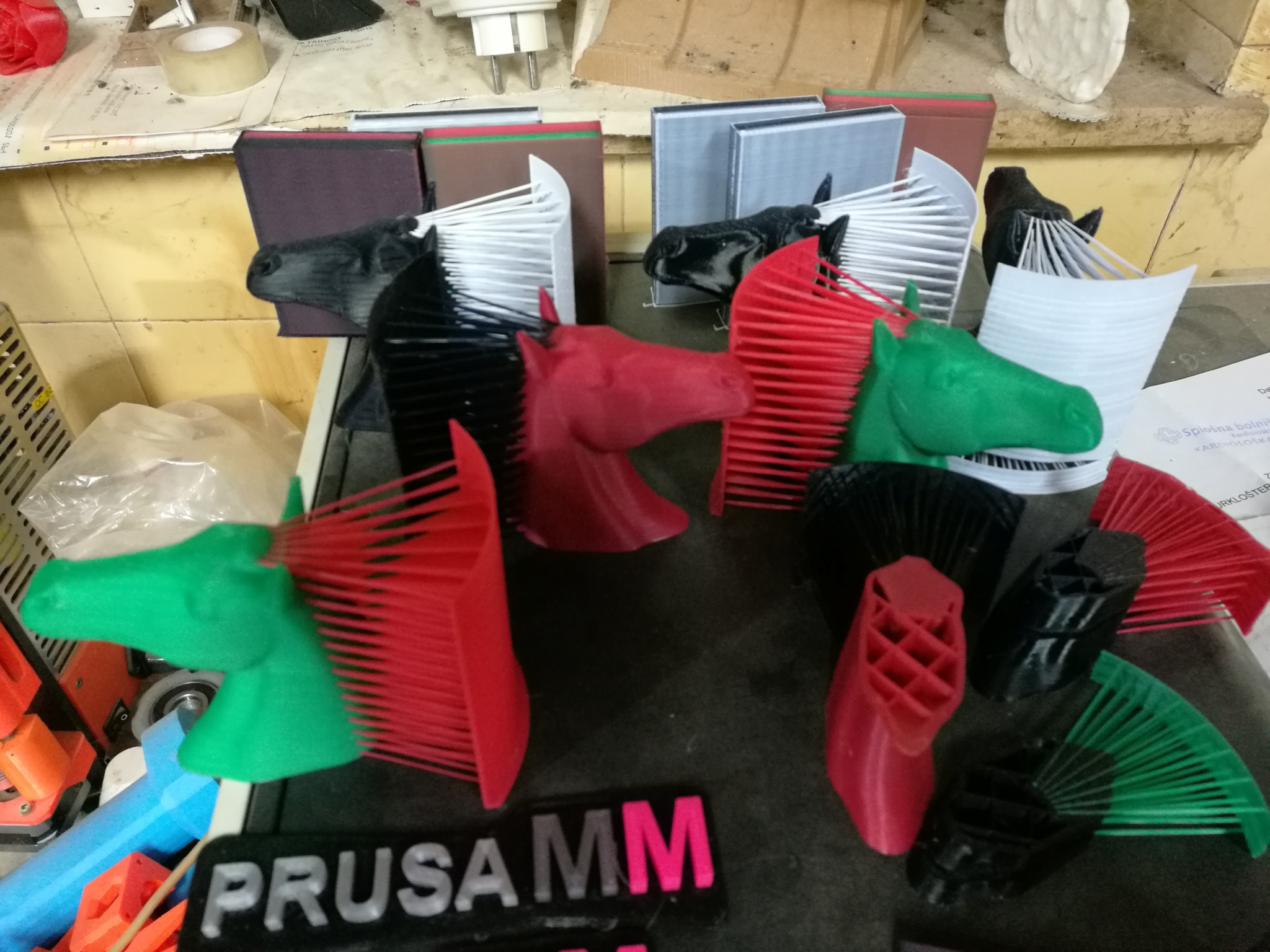Stringy print
I am very happy with my Prusa i3 MK2S, but have noticed that with some prints, it leave some stringy excess filament:
I'm using the included Slic3r software on the default settings, and the included PLA filament that came with the printer. I haven't made any changes to the Slic3r settings, or any settings on the printer. I am very happy with the overall quality and reliability of the printer, the stringiness is my only complaint.
Any advice, especially if there's an 'official fix' to this (couldn't find any), would be greatly appreciated.
Thanks,
MIke
Re: Stringy print
Some stringiness is a fact of life with 3D printing, and some filaments are worse than others.
That said, there are a few things you can do to combat the stringiness.
1) Lower the temperature. The stringy ness is in part because the filament is too flow-y when not being pushed through the extruder. This is typically because it is a bit too hot. People have made calibration towers (see Thingiverse) that does lots of different temps and lets you see the stringyness at each temp, but in reality, you can just drop your temp about 5 deg and see what you get. Repeat. (Temperature also affects overhangs, bridging, and stringing - there are tourture tests available on Thingiverse for all.)
Quick ooze test example: https://www.thingiverse.com/thing:22263
2) The retraction settings. This is the setting by which the printer "pulls back" on the filament when it moves or lifts. If you set it too high, it can clog your extruder. Too low, and you get excess stringing. People on the forum recommend keeping it less than 1mm or less than 0.8mm depending on who you ask. Some users push it higher with no issues. Others have issues if they push it higher. Try it out.
Any advices given are offered in good faith. It is your responsibility to ensure that by following my advice you do not suffer or cause injury, damage or loss. If you solve your problem, please post the solution…
Re: Stringy print
Some stringiness is a fact of life with 3D printing, and some filaments are worse than others.
That said, there are a few things you can do to combat the stringiness.
1) Lower the temperature. The stringy ness is in part because the filament is too flow-y when not being pushed through the extruder. This is typically because it is a bit too hot. People have made calibration towers (see Thingiverse) that does lots of different temps and lets you see the stringyness at each temp, but in reality, you can just drop your temp about 5 deg and see what you get. Repeat. (Temperature also affects overhangs, bridging, and stringing - there are tourture tests available on Thingiverse for all.)
Quick ooze test example: https://www.thingiverse.com/thing:22263
2) The retraction settings. This is the setting by which the printer "pulls back" on the filament when it moves or lifts. If you set it too high, it can clog your extruder. Too low, and you get excess stringing. People on the forum recommend keeping it less than 1mm or less than 0.8mm depending on who you ask. Some users push it higher with no issues. Others have issues if they push it higher. Try it out.
Thank you, that's good information, and I'll try out the 'torture' tests and testing different temperatures. For retraction setting, to be clear, are you talking about Length, Lift Z, or something else? Here's my retraction settings box, and I want to make sure I'm tinkering with the correct setting.
Re: Stringy print
There really should not be a stringing problem with this model
Printed a few months ago with the MMU. Just get the settings right and they print fine.
Failures are MMU load/unload issues
Peter
Please note: I do not have any affiliation with Prusa Research. Any advices given are offered in good faith. It is your responsibility to ensure that by following my advice you do not suffer or cause injury, damage…
Re: Stringy print
Thank you, that's good information, and I'll try out the 'torture' tests and testing different temperatures. For retraction setting, to be clear, are you talking about Length, Lift Z, or something else? Here's my retraction settings box, and I want to make sure I'm tinkering with the correct setting.
The Z-Lift is the little "Hop" the printer does when moving around. This prevents the head from hitting the print.
Retraction Length is amount of filament "sucked back up" when it should not be printing.
The Retraction speed is how quickly it does that.
Some people have reported that the speed can affect the stringiness. I have length = 0.5, speed = 10 and am pleased with that. Your machine/filament may be different.
Any advices given are offered in good faith. It is your responsibility to ensure that by following my advice you do not suffer or cause injury, damage or loss. If you solve your problem, please post the solution…
